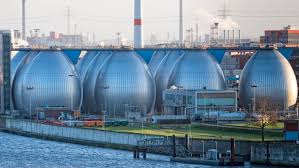
Breaking News
 Grand Theft World Podcast 257 | Foreign Affairs with guest Ernest Hancock
Grand Theft World Podcast 257 | Foreign Affairs with guest Ernest Hancock
 You've Never Seen Tech Like This
You've Never Seen Tech Like This
 Supreme Court Won't Exempt California Schoolchild From Vaccination Mandate
Supreme Court Won't Exempt California Schoolchild From Vaccination Mandate
 Visualizing the abundance of elements in the Earth's crust
Visualizing the abundance of elements in the Earth's crust
Top Tech News
 3D Printed Aluminum Alloy Sets Strength Record on Path to Lighter Aircraft Systems
3D Printed Aluminum Alloy Sets Strength Record on Path to Lighter Aircraft Systems
 Big Brother just got an upgrade.
Big Brother just got an upgrade.
SEMI-NEWS/SEMI-SATIRE: October 12, 2025 Edition
 Stem Cell Breakthrough for People with Parkinson's
Stem Cell Breakthrough for People with Parkinson's
 Linux Will Work For You. Time to Dump Windows 10. And Don't Bother with Windows 11
Linux Will Work For You. Time to Dump Windows 10. And Don't Bother with Windows 11
 XAI Using $18 Billion to Get 300,000 More Nvidia B200 Chips
XAI Using $18 Billion to Get 300,000 More Nvidia B200 Chips
 Immortal Monkeys? Not Quite, But Scientists Just Reversed Aging With 'Super' Stem Cells
Immortal Monkeys? Not Quite, But Scientists Just Reversed Aging With 'Super' Stem Cells
 ICE To Buy Tool That Tracks Locations Of Hundreds Of Millions Of Phones Every Day
ICE To Buy Tool That Tracks Locations Of Hundreds Of Millions Of Phones Every Day
 Yixiang 16kWh Battery For $1,920!? New Design!
Yixiang 16kWh Battery For $1,920!? New Design!
 Find a COMPATIBLE Linux Computer for $200+: Roadmap to Linux. Part 1
Find a COMPATIBLE Linux Computer for $200+: Roadmap to Linux. Part 1
MIT tech could let desalination plants use their own brine waste

Developed by a research team at MIT, the proprietary system incorporates what are described as "well-known and standard chemical processes." These include a nanofiltration process to initially remove unwanted compounds from the brine, followed by one or more stages of electrodialysis. As a result, the brine is converted into useful chemicals such as sodium hydroxide.
More commonly known as caustic soda, sodium hydroxide is often utilized to change the acidity of seawater entering desalination plants, which in turn helps to prevent fouling of the filtration membranes that are used to remove the salt. Ordinarily, plant operators have to buy the chemical. With the MIT system, though, they would be able to produce even more than they need, on-site. The excess could then be sold for use in other applications.
Other chemicals that could be produced from the brine include hydrochloric acid, sales of which would likewise be a source of revenue. And as an added bonus, the scientists suggest that plants could save money by no longer needing to pump their brine out into the ocean.



